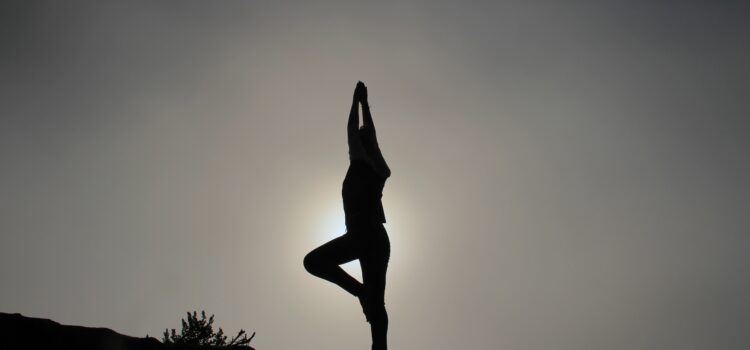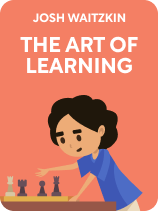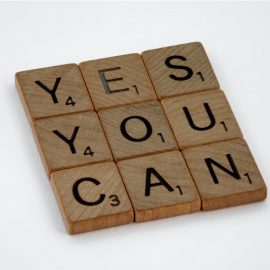

This article is an excerpt from the Shortform book guide to "The Art of Learning" by Josh Waitzkin. Shortform has the world's best summaries and analyses of books you should be reading.
Like this article? Sign up for a free trial here .
Why is proper form so important? How do you train yourself to maintain the correct form without constantly thinking about it?
When you are learning a new move, it’s important to practice it with proper form from the get-go. If you practice with improper form, you don’t just risk injury, but also make it harder to retrain yourself as your body gets used to an incorrect form.
Here’s how to learn the proper form for any move or exercise.
Learn How Correct Form Feels
Waitzkin describes how he learned these fundamental skills from tai chi by slowly practicing one small movement at a time. For example, you might train a simple step forward, going slowly until the form becomes natural, like moving your hand an inch through the air.
There are three techniques for learning correct form:
- Deepen your awareness. Practice becoming present and moving your awareness around your body. Focus on how your body feels, and learn to move that awareness around internally.
- Relax tensions. When you’re learning to do something new with your body and mind, Waitzkin implies that there’s usually some resistance. In physical skills, your physiology—muscles, nerves, and so on—need to adapt to the unfamiliar form. In mental skills, you need to strain toward new connections, as we explained in Chapter 2. With both of these, presence helps you ease through the physical and psychological tension that precedes learning.
- Focus intensity. Once you’ve worked through resistance, the next step is to focus your energy into the new form. For example, you need to tense your muscles to properly develop them, or concentrate your mind on an idea to understand it.
| Somatic Awareness Somatic mindfulness means noticing how your body feels: whether you’re physically tense or relaxed, how individual muscles feel, and whether there’s an emotional response rippling through your body. Developing this awareness equips you to experience your body’s sensations without being controlled by them and enables you to develop new behaviors, since you’re able to let go of habitual reactions and respond instead. One way of developing somatic awareness is through Focusing, a technique explained by Eugene Gendlin in his 1978 book: Focusing. In short: Find a quiet space and pay attention to your body—often your stomach or chest. Then ask, “What’s most salient to me right now?” and calmly observe the feelings that arise within you. As you do so, you relax inner tension, similarly to what Waitzkin describes. While Focusing deals with “felt sense,” or bodily emotional awareness, it uses the same mechanism as Waitzkin’s technique: Become aware of an internal tension point, and gradually move through it with calm, present awareness. The technique is not just for inner relaxation—artists, writers, and scientists report that it’s opened them to positive creative experiences. This is a bit like Waitzkin’s third step: After you relax resistance, there’s room for new expression (whether of mind, body, or heart) to come forth. |
Waitzkin implies that you need to cycle tension and relaxation to deepen your embodied understanding of a technique. The deeper you take it, the better you’ll be able to wield that technique in competition—it becomes smooth and instinctive.
When you deeply study a single skill, you develop a feeling for proper form. Though he doesn’t say this explicitly, we can infer that this is not mental understanding—it’s physical understanding. Reaching that feeling equips you to take on more advanced techniques.
(Shortform note: Waitzkin’s explanation of this feeling is somewhat fuzzy, but the concept of form is common in physical training. Proper form means placing your body in a strong, well-aligned position, with your bones oriented properly, muscle flexed, and joints supported. You can find form in push-ups, squatting, or even walking—all it takes is patient practice of proper positioning. And as you practice that form, your body will start to find it more naturally, demonstrating again Waitzkin’s idea of form to leave form.)
To get to the feeling of proper form, rest your awareness in your body and gradually move through any resistance. Then, concentrate energy into the technique you’re practicing to build energy into it. For example, you might relax your shoulders to loosen them up, then practice tensing them to perform a pull-up.
This is like stretching: Gently ease through tension, moving toward what feels right. Gradually, you’ll develop that feeling of right form.
(Shortform note: Though Waitzkin doesn’t explicitly identify his method as such, it’s much like deep practice, which we explained in Chapter 2. Unlike earlier, here Waitzkin focuses on how it feels to move through the process, rather than giving concrete steps. This hints at what deep practice is really about—navigating the undulations of effort and release, working through resistance toward good form, and gradually reshaping what your mind and body can do.)
Consider “mountain” pose, a basic yoga posture. You stand with your feet together, flat on the floor; knees flexed but not locked, abs tightened slightly to support a straight spine; your shoulders resting back. You could spend hours deepening your embodied understanding of this pose: Feeling out just the right distribution of weight in your feet, just the right tension through your legs, just the right flex in your core. Eventually, you’ll reach a reliable feeling of “yes, this is right form.”
Waitzkin argues that once you’ve reached that feeling once, you can sense whether you’ve reached it with another technique. For example, a deep understanding of one yoga pose will help you develop any other, or a martial arts stance, push-ups, and so on.
(Shortform note: To grasp this point, you may find it necessary to try it out—thinking about something can only take you so far. Western thought traditionally prefers clear, propositional thinking, but “felt sense” is valid. It has its origins in ancient Greece, where the Greeks had at least four valid ways of knowing. The two relevant here are episteme, or “propositional knowing,” and techne, or “participatory knowing.” The latter corresponds to felt sense, and you can only develop it by experiencing something first hand. For example, you’ll never know what it feels like to fly off a ski jump unless you get out there and do it.)

———End of Preview———
Like what you just read? Read the rest of the world's best book summary and analysis of Josh Waitzkin's "The Art of Learning" at Shortform .
Here's what you'll find in our full The Art of Learning summary :
- Life advice from chess prodigy and tai chi World Champion Josh Waitzkin
- Detailed looks at the psychological and technical sides of skill-building
- How to build any skill from the bottom-up





